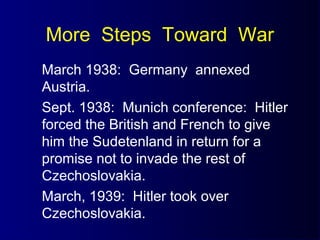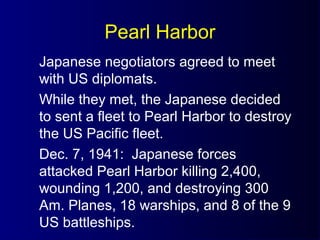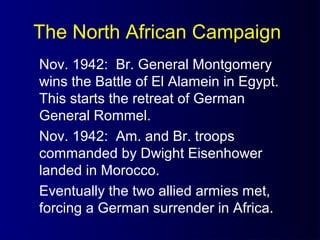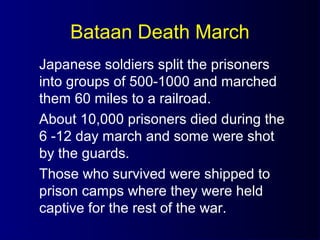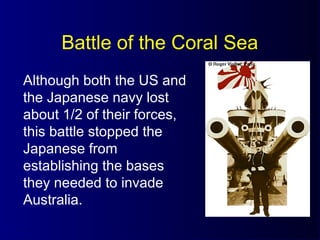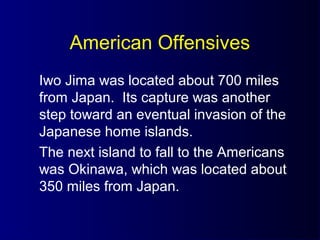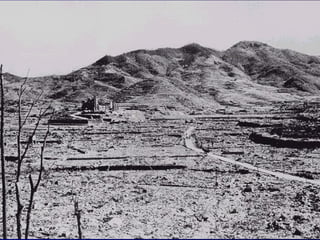World War II (1939-1945) was a global conflict initiated by fascist aggression led by dictators like Mussolini and Hitler, resulting in widespread military confrontations across Europe and Asia. Key events included the invasion of Poland by Germany, the U.S. entry following the attack on Pearl Harbor, and major battles like Stalingrad and D-Day, which shifted the tide against the Axis powers. The war concluded with the unconditional surrender of Japan after the atomic bombings of Hiroshima and Nagasaki, leading to significant geopolitical changes and the establishment of communist regimes in Eastern Europe.







